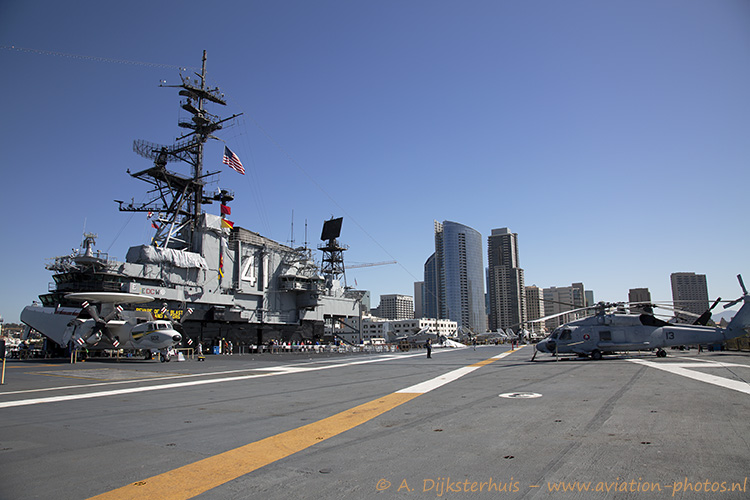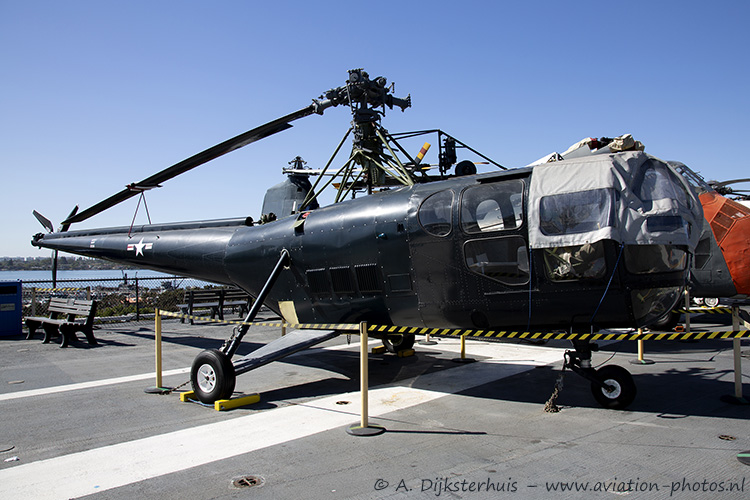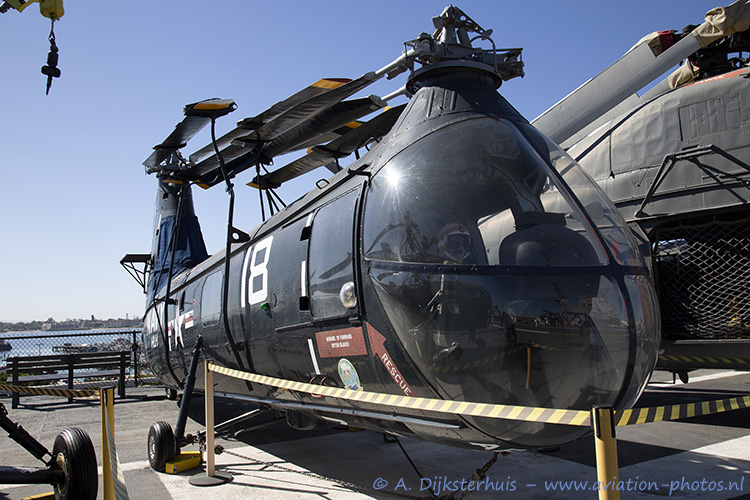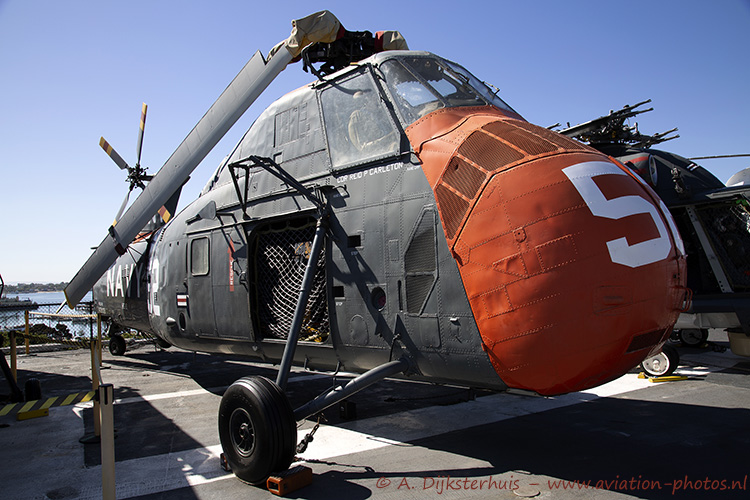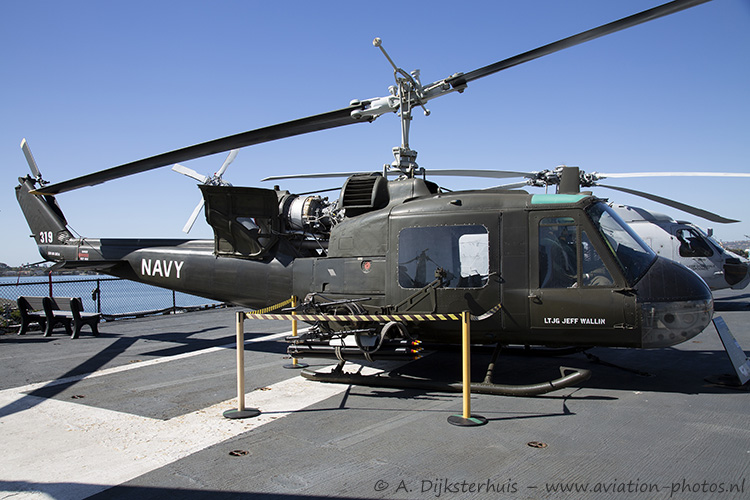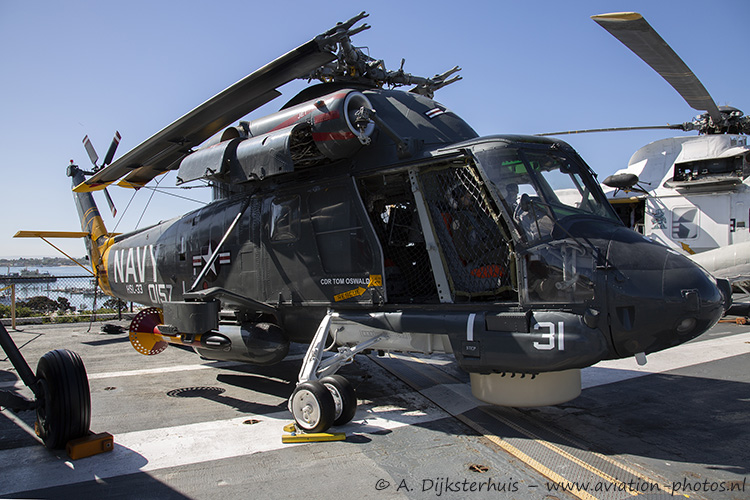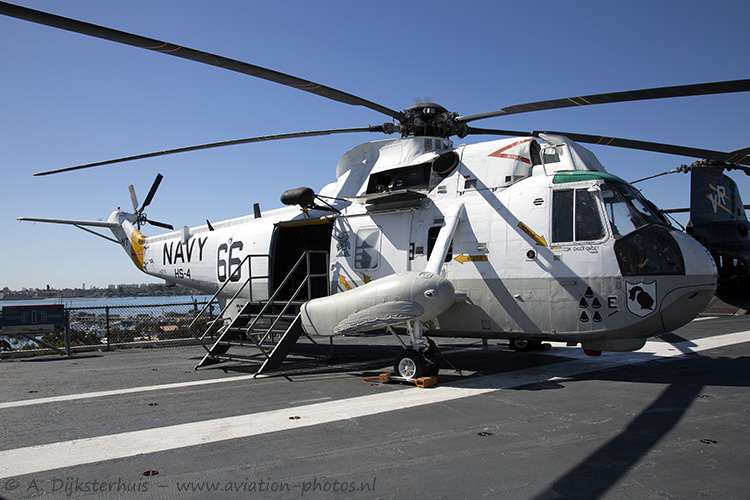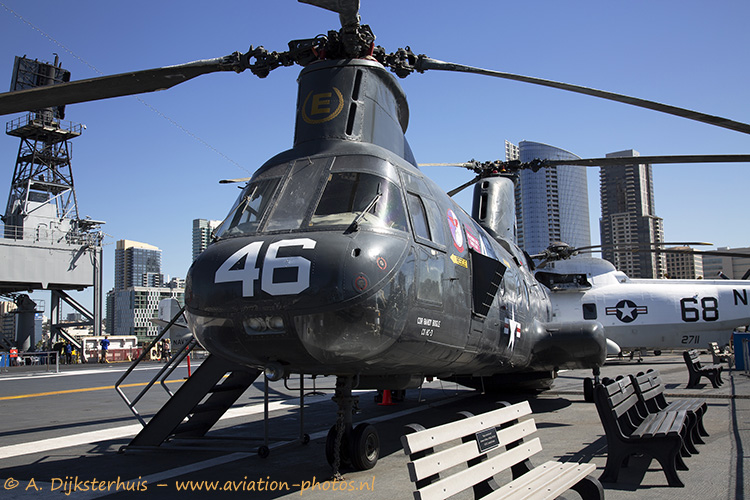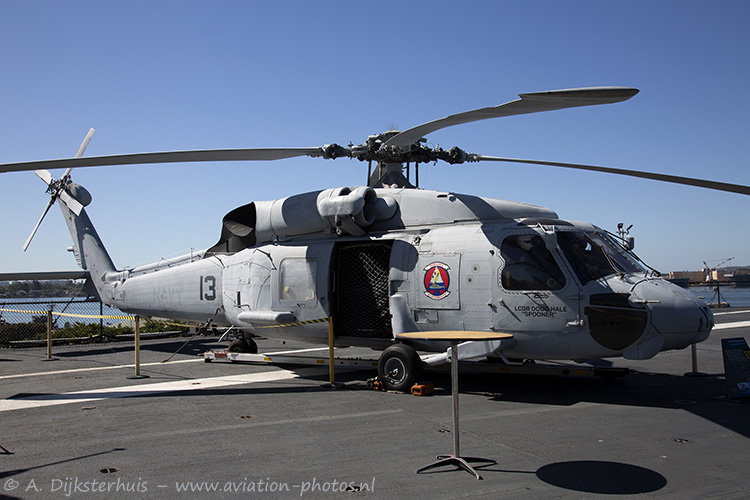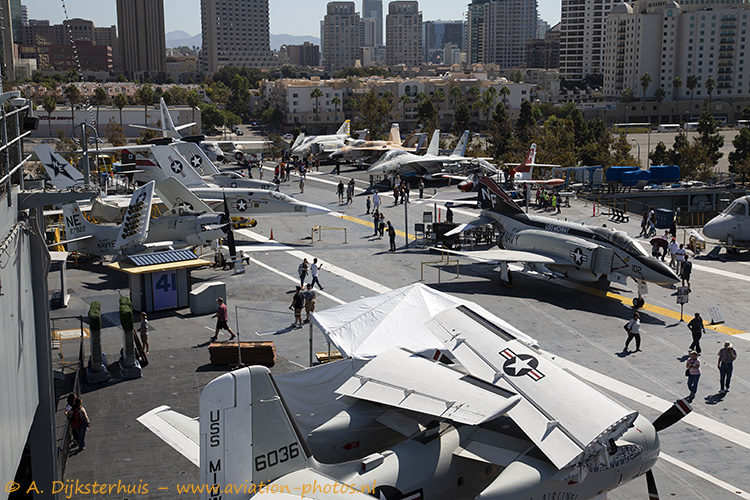The USS Midway (CV41) was the longest serving aircraft carrier in the 20th century. The Midway was laid down in October 1943 and launched on 20 March 1945. It was named after the battle of Midway of June 1942. The carrier was commissioned on 10 September 1945 and thus missed the second world war by just one week.
In 1991 the USS Midway sailed to San Diego where she was decommissioned at North Island Naval Air Station on 11 April 1992. In June 2004, the USS Midway was opened as a museum, docked in the Bay of San Diego, California. Helicopter Life took the opportunity to visit the aircraft carrier.
The USS Midway was the first aircraft carrier operating in the artic region, while testing equipment and developing new flight deck procedures. On 6 September 1947, a captured German V-2 rocket was launched from her flight deck which was in fact the first launch of a rocket from a moving platform. In 1955 modifications were made including an angled flight deck.
The first combat deployment came in 1965 when strikes against military and logistics installations in North and South Vietnam. F-4B Phantoms from the USS Midway made the first air-to-air kills of the war. Seventeen aircraft of the USS Midway were lost during this cruise.
In June 1987, the USS Midway was sailing in the western Pacific, and on the 3rd of June a F/A-18A Hornet from VFA-192 was landing onboard the carrier. An AIM-9M Sidewinder fell off during touch down and slid along the flight deck, falling into the ocean.
Bird Dog
The USS Midway was one of the ships that deployed to the waters off South Vietnam in April 1975. Ten days later operation Frequent Wind was carried out with the mass evacuation of U.S. personnel and Vietnamese after the fall of Saigon. On April 29, a small two-seat O-1 Bird Dog appeared on the horizon and approached the USS Midway. The pilot, South Vietnamese Air Force Major Bung-Ly, succeeded to drop a message onto the deck after several low passes. The note was signed by major Bung, wife and five children. All stuffed into a two-seater. He asked to move the helicopters on the deck so he could land on the carrier.
Sikorsky HO3S-1 Dragonfly
The oldest helicopter on the flight deck is the Sikorsky HO3S-1 with BuNo 122515 (construction number 51-054). In November 1946, the Navy received the first Sikorsky HO3S-1 with folding rotors and an externally mounted rescue hoist. It replaced some fixed wing aircraft in the fleet. The HO3S-1 operated from several warship classes, but mainly from aircraft carriers. During evaluation, the first rescue became a fact in February 1947 with the rescue of a pilot that ditched near the USS Leyte. It took only six minutes get him safely back on the carrier. The Sikorsky HO3S-1 demonstrated the potential of a helicopter in a combat environment. Many missions were flown during the Korean War, rescuing pilots that were shot down behind enemy lines and evacuating wounded personnel from the frontline. The last HO3S-1 was withdrawn from use in 1957.
Piasecki HUP-2 Retriever
The HUP Retriever was an early tandem rotor design that entered service in 1949. The Retriever was used for general purpose transport and rescue operations while operating onboard ships. It actually had the same engine as the Sherman tank in World War II. This particular example entered service in October 1953 with BuNo 130059, redesignated in 1962 as UH-25B and was struck of charge in March 1963. It was sold to a civilian owner and received serial N88949. In 2010 it arrived at the USS Midway restoration facility and received HU-1 markings.
SH-34J Seabat
Also on display is the Seabat, it was built in 1958 and delivered to the US Navy with BuNo 143939 as a Sikorsky HSS-1N. In 1962 the type was redesignated as a Sikorsky SH-34J Seabat. The Seabat helicopter, powered by an World War II-era R1820 piston engine, proved to be very successful in anti-submarine warfare. The auto hover on this Seabat version made it suitable to operate at night. The helicopter was withdrawn from use in 1971. Nowadays preserved with HS-8 markings.
UH-1B Huey
Although original designated as the HU-1, hence Huey. The well known, if not famous, helicopter is the UH-1 Huey, it first saw combat operations during the Vietnam War with just over seven thousand US Army Huey’s deployed. In 1966 US Army gunships supported the US Navy patrol boats on the Mekong River. On 1 April 1967, the US Navy established their only rapid reaction armed helicopter squadron ever: Helicopter Attack (Light) Squadron Three (HAL-3), nicknamed the ‘Seawolves’. The ‘Seawolves’ provided close air support with temporary surplused Army UH-1B examples which were already well used. The Huey’s received specialized gun mounts and a radar altimeter which proved to be a crucial piece of equipment during the operations above the flat delta terrain at nights or during bad weather conditions. The UH-1B on the flight deck (former US Army 60-3614, c/n 0214, N70264) of the USS Midway is wearing HAL-3 markings but never actually served within the unit.
SH-2 Seasprite
The SH-2 was produced in several variants, including a Search and Rescue version, A prototype gunship was also built and evaluated by the US Army in 1963. The SH-2D was the first dedicated Anti-Submarine Warfare (ASW) of the Seasprite. The SH-2F became the next Anit-Submarine Warfare variant, fitted with a pair of General Electric T58-GE-8F turboshaft engines of 1,350 shaft horsepower. Most SH-2F helicopters were conversions of existing SH-2D models. The Seasprite on deck is the an SH-2F with BuNo 150157 and is displayed in the markings of Helicopter Antisubmarine Squadron Light (HSL) 33. The Seaprite is more or less replaced by the SH-60B Seahawk. The last SH-2F Seasprite was retired from active service in 1994.
SH-3 Sea King
The SH-3 Sea King served as an anti-submarine helicopter for more than two decades. This particular airframe (BuNo 149711) served onboard the USS Midway with HC-7 Squadron DET 110 during 1971. It now carries HS-6 markings on the port side including Apollo recovery markings, reflecting the squadrons role in recovering astronauts. On October 22, 1973, an SH-3G crashed off the Midway’s bow during take off for a Search and Rescue operation after a mid-air collision between an A-7A and an EA-6A from the USS Midway. All three crewmembers were killed in this accident.
HH-46D Sea Knight
The Sea Knights entered service for Vertical Replenishment (VERTREP) missions to resupply ships at sea. The 150594 was originally built as a CH-46A and delivered to the US Marine Corps in 1964. It is preserved on the USS Midway in Helicopter Combat Support Squadron 3 (HELSUPPRON 3), HC-3 ‘Pack Rats’ markings. The twin rotors concept provided easier and more heavily payloads using the cargo hooks. The type was also used for passenger transport.
SH-60 Seahawk
The SH-60B replaced the SH-2 in the Anti-Submarine Warfare role. Later the SH-60F and HH-60H succeeded the SH-3 Sea King in the Anti-Submarine Warfare and Search and Rescue role. The SH-60F with BuNo 164079 is preserved with HS-10 Warhawks markings. Nowadays, several versions of the H-60 are in service within the Navy, Army and Air Force.
This article was mainly focussed on the helicopters, but the museum is in general definitely worth a visit. You can get a good impression about life onboard of an aircraft carrier. The fixed wing aircraft are mainly on the flight deck. The more vulnerable World War II aircraft can be found in the hangar deck, reflecting the history behind the name of the aircraft carrier.
